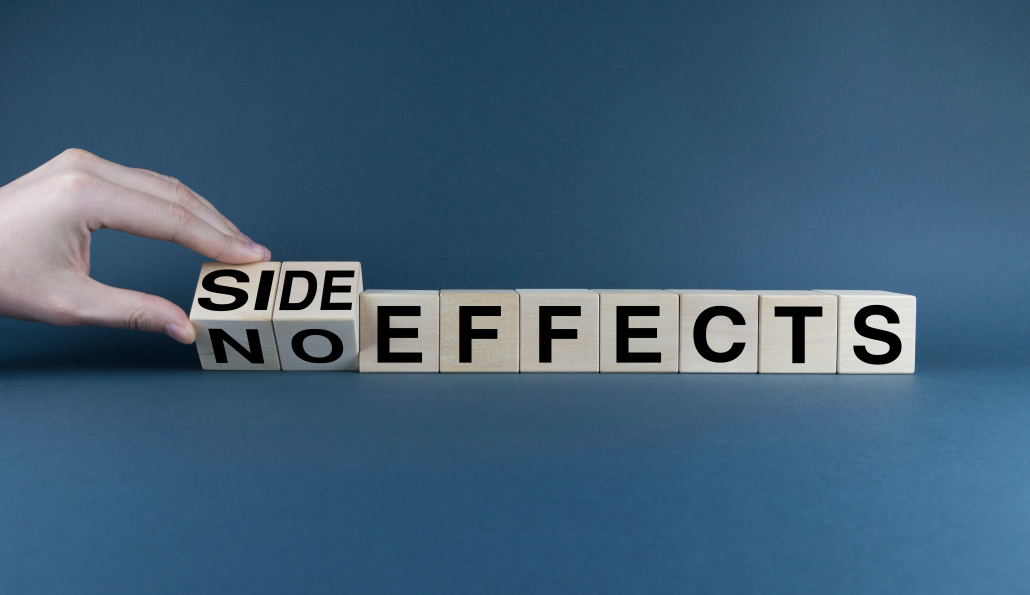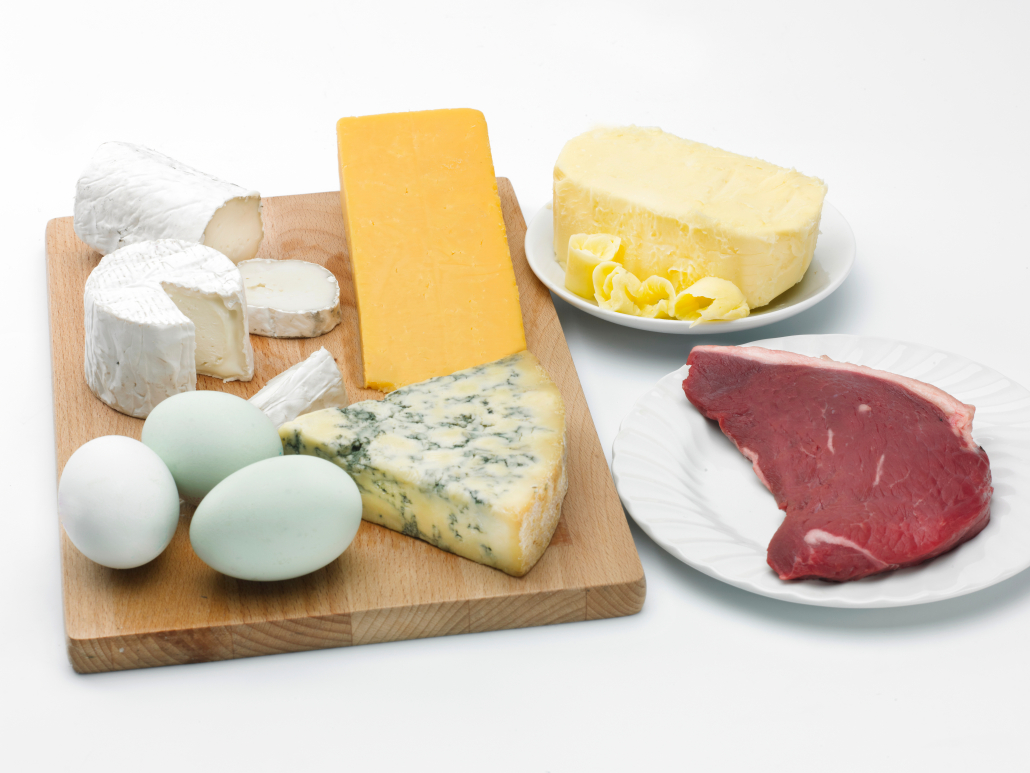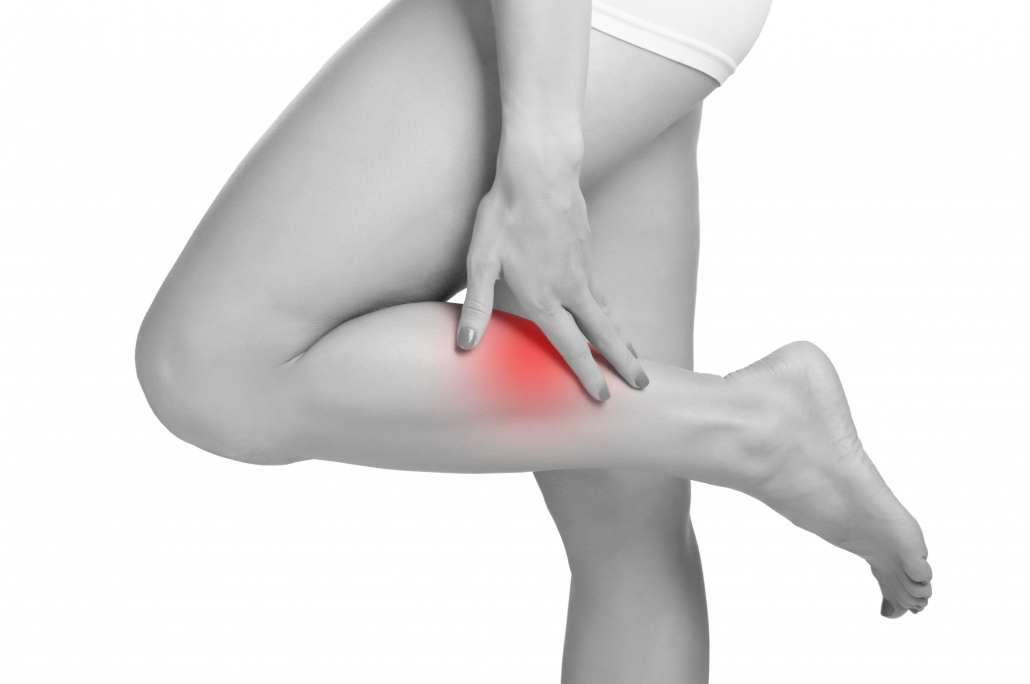We include products in articles we think are useful for our readers. If you buy products or services through links on our website, we may earn a small commission.
Keto Diet Diarrhea — and How to Fix It
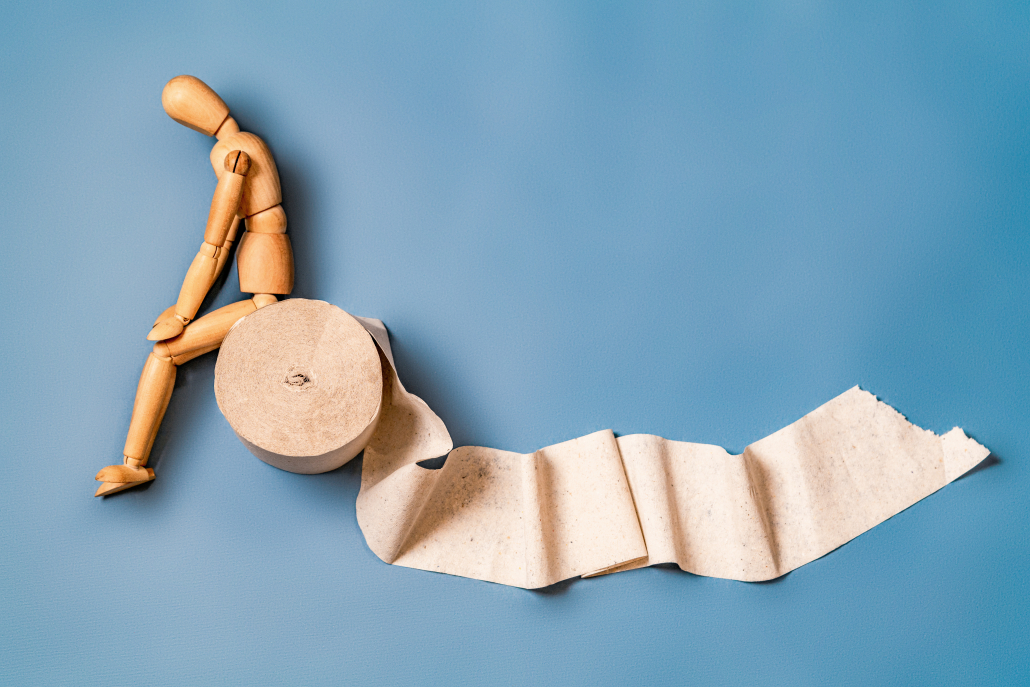
Table of Contents
Going from the Standard American Diet to a keto diet creates major changes to digestion. A common side effect is keto diet diarrhea, part of the famous keto “whoosh” effect.
The keto diet presents your digestive system with more fat than it’s used to while changing your gut microbiome. Though fat is a premium fuel, and unhealthy gut flora is dying off, these positive changes can require a digestive adjustment period.
What is the Keto Diet Diarrhea Whoosh?
The keto diarrhea “whoosh,” is a term used for the flushing of fluids from the body that many people experience when they begin the transition into ketosis.
Diarrhea is characterized by unexpectedly loose, runny stools. Normally, diarrhea indicates some sort of problem — say food poisoning or parasitic infection — but not in the case of the keto diarrhea “whoosh.” [1]
This whoosh carries water weight, inflammatory substances, and digestive fluids with it. It’s not uncommon for keto dieters to lose 5-10 pounds in their first week on the diet.
Most of this weight is classic ‘water weight’ from lost glycogen, but some of it is from your small intestine and/or colon. Don’t be too surprised if your body resorts to diarrhea in a quest to shed excess water as quickly as possible.
Reasons for Keto Flu Diarrhea
You might say that diarrhea is part of the classic ‘keto flu’ that so many people undergo in their first week on keto.
Keto flu diarrhea, in fact, is roughly as common as keto diet constipation when it comes to side effects. Keto diet diarrhea usually happens when your digestive tract experiences unusually fast changes, including:
- Changing gut bacteria
- Increased fat intake
- Bile acid malabsorption
- Nutrient deficiencies
- Excess protein
- Excess inflammation
Changing gut bacteria
The keto diet tends to have a cleansing effect on the gut. When you ditch fiber and processed sugar, you’re starving gut bacteria of their primary source of fuel.
This is especially true considering that a Standard American Diet (SAD) tends to overload your intestinal tract with far more fiber and sugar than it was designed to handle, resulting in problems like SIBO and leaky gut. [2]
Cutting out carbs will probably result in ‘die-off’ symptoms as carb-loving bacteria begin to die out and lose ground to fat-loving ones.
When these unhelpful microbes dissipate, they need to be expelled somehow — and they may very well be expelled via unexpected diarrhea. [3]
Increased Fat Intake
The keto diet is, above all, a high-fat diet. These healthy keto fats are among the best fuel sources for your brain, heart, and muscle tissues. But it may take some time for your body to regain its digestive balance..
While most dietary fats may lubricate the digestive tract and provide a mild laxative effect, some ultra-saturated fats (like MCT-rich coconut oil) can speed transit time even further. Diarrhea is a common side effect of ‘overdoing’ MCTs. .
Two things must happen for your digestive tract to make the leap from high-carb to high-fat: both bile production and digestive enzyme activity need to increase.
Lack of Bile
Bile is essentially your gut’s internal emulsifier. It’s released from your gallbladder by a hormone called cholecystokinin (CCK) whenever you eat fat, and once released it goes to work mixing up fats and preparing them for absorption. [4]
The more fat you eat, the more bile your gallbladder needs to produce — and this shift from low production to high production can be a big leap.
If your body is struggling to adjust to higher fat intake, consider supplementing with ox bile. This supplemental bile can assist with fat digestion until your gallbladder has time to adjust.
Certain digestive enzymes also assist with assimilating the fat you eat. Amylase and lipase are two of the primary digestive enzymes that can lag behind after you’ve upped your dietary fat. Supplement with them if you need to. [5]
Bile Malabsorption
Bile acid production is a costly process, both in terms of how long it takes and the materials it requires.
Between 95 and 97% of the bile in one’s body has been produced from old bile, meaning there’s not a whole lot of extra reservoirs of the substance just floating around. [6]
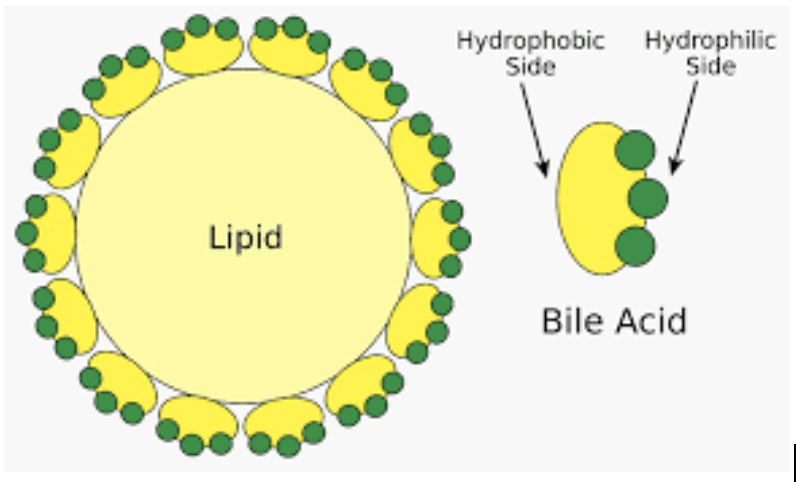
Bile acid is a perfect match for tough-to-break-down lipids. Image from biologydictionary.net
Your body’s bile supplies can be stretched even thinner when old bile isn’t correctly reabsorbed. This old bile can easily cause diarrhea if it lingers in your small intestine instead of being recycled.
Bile problems are most common if you have pre-existing digestive ailments like IBS, IBD, Chron’s disease, celiac disease, or SIBO. [7]
If you’re experiencing bile malabsorption — or want to prevent it in the first place — then you might consider trying the carnivore adjacent diet or the cyclical ketogenic diet. These modified keto diets allow for small amounts of fruits and root veggies. If done right, the carnivore adjacent diet can prevent deeply ketogenic states and reduce your dietary fat requirements.
Even if the above methods fail, don’t panic. Some pharmaceutical drugs are very effective at treating bile acid-related diarrhea:
- Cholestyramine (Questran)
- Colesevelam (Welchol)
- Colestipol (Colestid)
Nutrient Deficiencies
Fat-soluble vitamins are among the most important nutrients for maintaining gut health. Vitamin A and vitamin D are especially important; they directly regulate bile acid production. [8]
Unfortunately, for those who wish to begin a keto diet, vitamin A and D deficiencies are quite common. In one large study, over 80% of participants with IBS, and over 30% of healthy participants were deficient in vitamin D. [9] Your body might have some difficulty upregulating its bile production if you go into keto with these types of underlying deficiencies.
In fact, any type of nutrient deficiency can increase your chances of experiencing keto diet diarrhea. Zinc and butyrate deficiencies are some of the other top culprits, so look into replenishing your body’s levels of these substances if you’re experiencing diarrhea. [10]
Butter is a great keto-friendly source of butyrate.
Excess protein
Keto is a moderate protein diet, but it can serve as a major increase in protein for many people who have been getting most of their calories from carbs.
Eating more protein than your stomach enzymes can break down may result in a buildup of toxic byproducts like ammonia. [11] After a certain point, the digestive tract may have no choice but to expel extra ammonia via diarrhea or unusually loose stools.
Overcoming this type of diarrhea is simple: just cut back on protein intake a little. Most people don’t need more than a gram of protein per pound of body weight to maintain their muscle mass.
Feel free to check the numbers for yourself with apps like Cronometer. If you weigh 160 pounds, you probably don’t need to be eating over 160 grams of protein per day. Meet your calorie requirements with dietary fats like butter or ghee instead. A truly ketogenic diet should obtain 70-80% of its calories from healthy fats, anyway.
Excess Inflammation
Most people experience reduced inflammation when they make the jump to keto. Just like any other rule, however, there are exceptions to this one. Some people may have allergies to keto-friendly foods that can inflame your gut and cause diarrhea. Common culprits include:
Dairy
The dairy products in most grocery stores may be animal products, but all too frequently, they contain unhealthy additives. Low-quality milk and cheese are often laced with gums, additives, or synthetic nutrients. [12]
If conventional dairy is giving you problems, consider finding a source of raw and/or A2 milk.
Raw dairy products contain enzymes needed for your body to digest them. At the same time, A2 dairy contains a more digestible form of protein than conventional A1 dairy does. Even if you can’t find A2 cow’s milk, you can always select goat or sheep’s milk instead (these animals are always A2).
You might also try eliminating dairy products from your keto diet for a specified amount of time before adding them back in.
Poultry and Pork
Next up on our list of potentially inflammatory keto foods are chickens and pigs. Neither species are ruminant animals, meaning neither are capable of converting the fats they eat into fats that are beneficial to us. Conventionally-raised chicken and pork is usually far too high in omega 6’s and far too low in omega 3’s — and this imbalance is practically a recipe for inflammation. Prioritize grass-fed meats to prevent these inflammatory problems. The lower you can drive inflammation levels, the lower your chances of experiencing keto diet diarrhea become. [13]
Nuts
Nuts are high in fat, but they are also extremely high in fiber and omega-6 fatty acids, and can contain numerous plant toxins and antinutrients. Often people eat lots of nuts when transitioning to keto. The combination of these compounds in high amounts can be inflammatory, allergenic, and trigger diarrhea.
How to Prevent Diarrhea on the Keto Diet
The following tactics can help you avoid keto diet diarrhea entirely.
- Staying hydrated
- Drinking bone broth
- Taking electrolytes
- Staying in motion
Staying hydrated
While proper hydration is always important, it becomes crucial when you first go ketogenic. That’s because this shift from carb-burning mode to fat-burning mode causes your body to flush water that’s attached to the glycogen (extra carbs) stored in your muscles.
As excess water leaves your digestive tract it can drastically speed up transit times — resulting in frequent bouts of diarrhea. (On the plus side, the numbers on the scale should go down just as frequently.)
For these reasons, make an effort to stay hydrated with water, salt, and other electrolytes during your first few weeks on keto. Some experts, Dr. Kiltz included, suggest water intake in the 2-2.5 liter/day range. [14]
Just don’t forget that bone broth counts towards this targeted daily intake. So do coffee and tea. [15] You can also approximate your hydration levels based on the color of your urine — it should be a light yellow color, never dark yellow.
Drinking bone Broth
Bone broth is a time-tested beverage that supplies many of the keto diet’s most crucial elements: water, electrolytes, calcium, glycine, and more.
Even the unique blend of amino acids present in bone broth (glycine is the primary amino) may prevent diarrhea. Studies show that glycine can ‘seal up’ otherwise-leaky gut junctions, allowing digested food to pass through your system without causing inflammation or irritation. The verdict from animal studies is even clearer: they show that glycine-rich gelatin can heal the gut’s sensitive microbe lining. [16][17]
Taking electrolytes
Yet another keto-specific change occurs within your kidneys; they excrete much more sodium once you’ve made the transition into ketosis. You may need up to 5 grams of salt per day to maintain adequate electrolyte status during this transitory phase.
Other electrolytes may help prevent dehydration — and accompanying keto diet diarrhea — too. Here are some guidelines: [18]
- Sodium: 2-7 grams/day
- Potassium: 500-3,500 milligrams/day
- Magnesium: 250-500 milligrams/day
Staying in motion
Gentle exercises like yoga play a surprising role in regulating your bowel health and frequency. Taking short, brisk walks after your meals may prevent keto diet diarrhea, too. There’s also a practical plus here: staying in motion could help you access deeper levels of ketosis faster, resulting in a shorter transition period with fewer unwanted symptoms.
keto diet Diarrhea: The Takeaway
keto diet diarrhea is a common side effect when making the transition into ketosis. But unlike other types of diarrhea, it is not a signal that anything is wrong.
Straegies to stay hydrated, bile and enzyme supplements, bone broth, and low-impact movement can prevent and alleviate keto diarrhea. t













